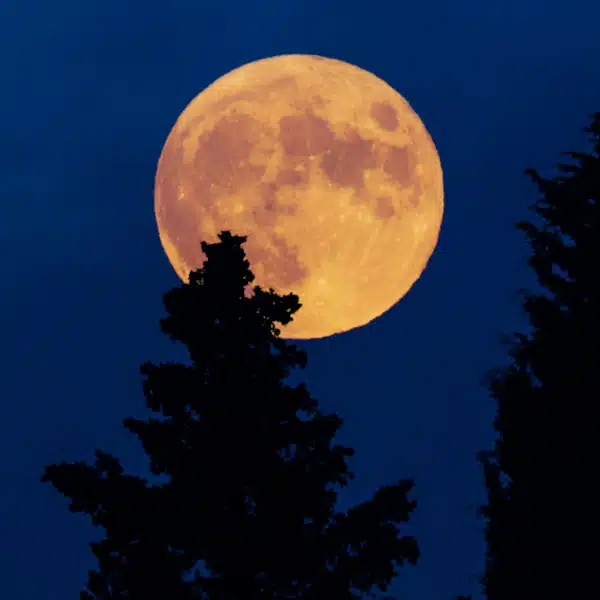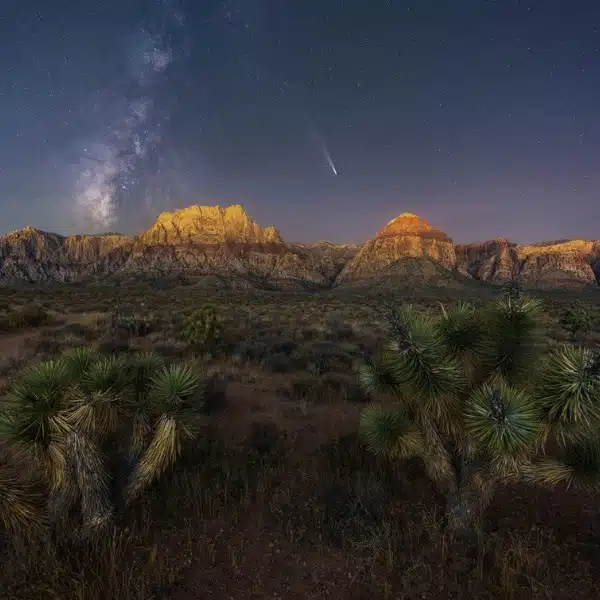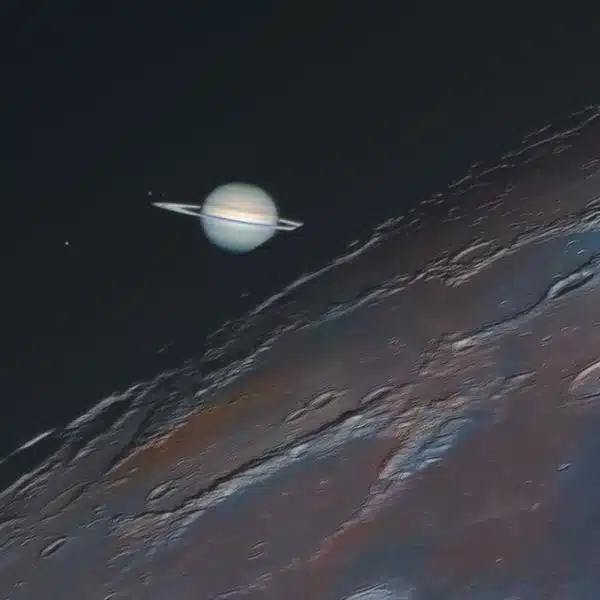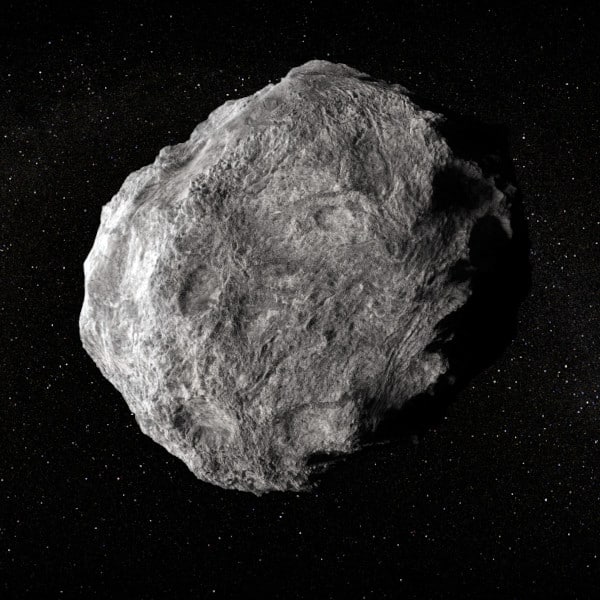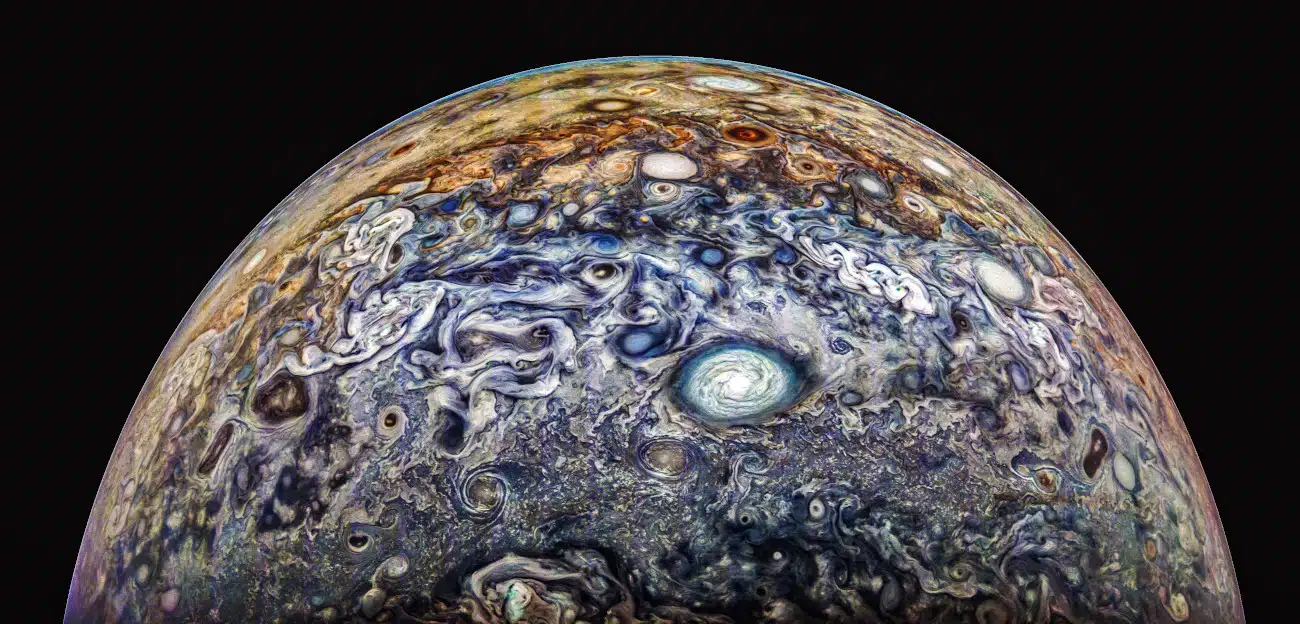
Photo: NASA / JPL / SwRI / MSSS / Gerald Eichstädt / Thomas Thomopoulos © (CC BY 3.0)
NASA's Juno mission completed its 66th close passage to Jupiter—also known as perijove—on October 23. The spacecraft, which has been orbiting our solar system's largest planet since July 2016, regularly returns images to Earth in the form of raw data. Since the mission doesn’t have a team of scientists dedicated to image processing, this labor relies on the work of citizen scientists, who have done some spectacular work by producing images that highlight the turbulent storms on Jupiter.
Juno was put in Jupiter's orbit to take a deeper look at its atmosphere and weather. It was the first mission to explore both its poles, spotting swirling cyclones on both ends of the planet. It also carried out research on Jupiter's gravitational and magnetic fields to learn more about how it was formed. That's why these new images are not only striking from an artistic point of view, but they are also priceless resources for astronomers. Most of the data is retrieved by Juno’s primary imager, known as the JunoCam, a 2-megapixel visible-light camera. It boasts four onboard filters, of which three can capture different wavelengths of visible light.
Once volunteer editors process these images, they submit them to the JunoCam website. The photographs present different approaches to color editing, from Gerald Eichstädt and Thomas Thomopoulous images, which feature high contrast colors to shine a light on the clouds in Jupiter's atmosphere, to Jackie Branc's work, which works with a more muted color palette to explore different angles of the planet. Though these processed images aren't exactly what the human eye would see, the choices of colors are meant to make it easier to understand what goes on in Jupiter's swirling atmosphere.
The Juno mission was originally supposed to last until October 2017 to avoid the spacecraft from colliding with three of Jupiter’s largest moons; however, NASA extended it after they ruled out any dangers. This extension of the mission has provided key opportunities to better understand what goes on on Jupiter. Now, the mission will have 10 more flybys before its end in September 2025, when the spacecraft will purposely be crashed into the Gas Giant.
To stay up to date with new images taken by the JunoCam and edited by citizen scientists, you can visit the JunoCam website.
NASA's Juno mission completed its 66th close passage to Jupiter, retrieving raw data that helps astronomers better understand this massive planet.
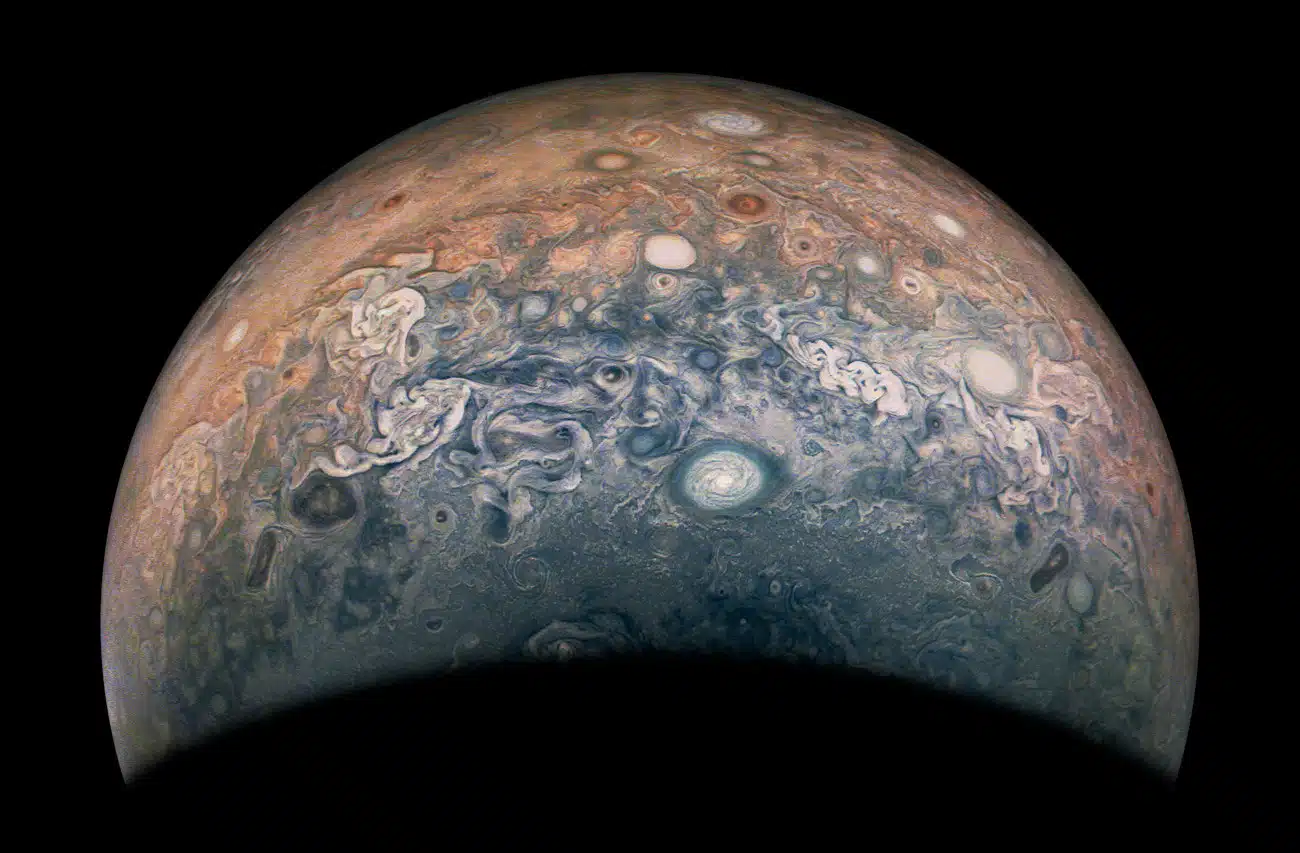
Photo: NASA / SwRI / MSSS / Jackie Branc © (CC BY 3.0)
Since the mission doesn’t have a team of scientists dedicated to image processing, citizen scientists volunteer to visualize the raw the data for the public.

Photo: NASA / SwRI / MSSS / Jackie Branc © (CC BY 3.0)
These community editors have done some spectacular work by producing images that highlight the turbulent storms on Jupiter.
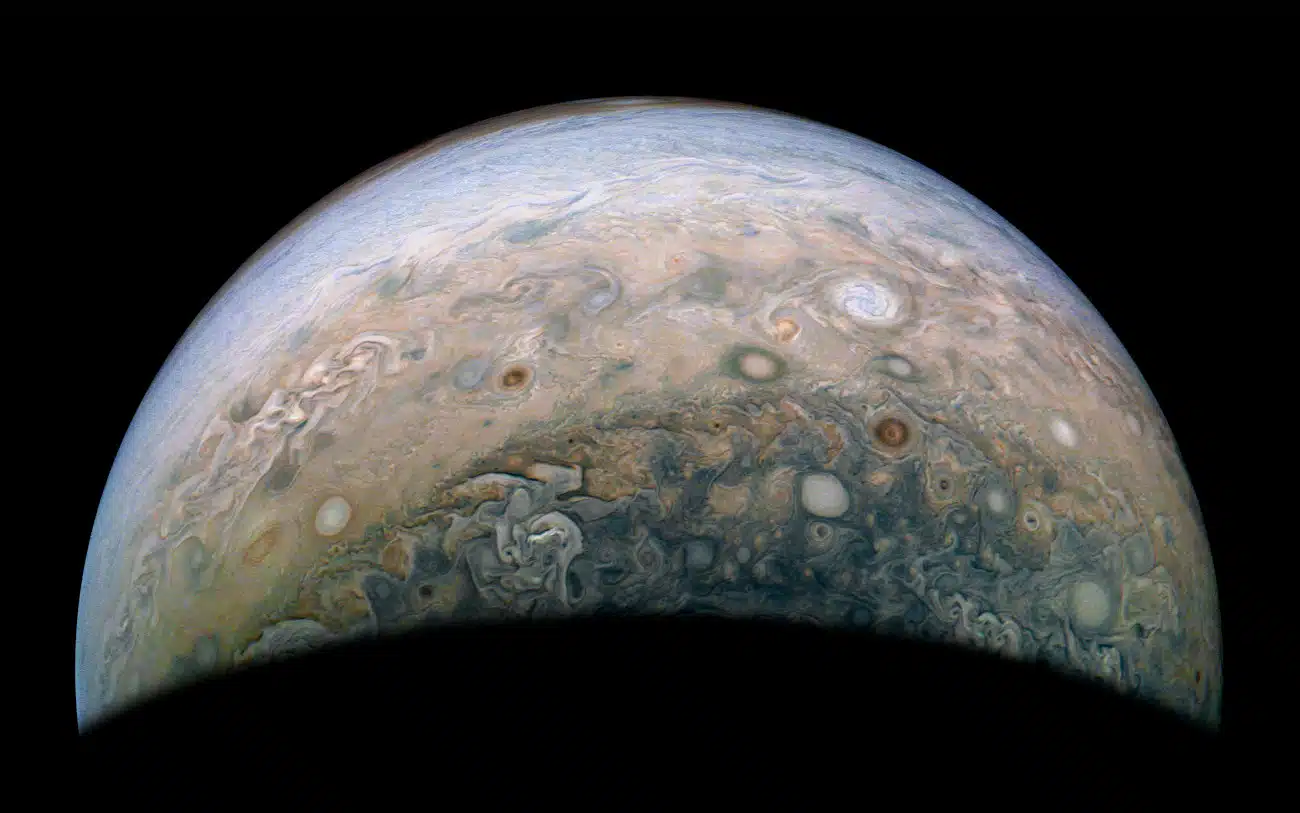
Photo: NASA / SwRI / MSSS / Jackie Branc © (CC BY 3.0)
Most of the data is retrieved by Juno’s primary imager, known as the JunoCam, a 2-megapixel visible-light camera.

Photo: NASA / SwRI / MSSS © (CC BY 3.0)
These new images are not only striking from an artistic point of view, but they are also priceless resources for astronomers.

Photo: NASA / SwRI / MSSS / Jackie Branc © (CC BY 3.0)
While these aren't exact replicas of what the human eye would see, the choices of colors are meant to make it easier to understand what goes on in Jupiter's swirling atmosphere.
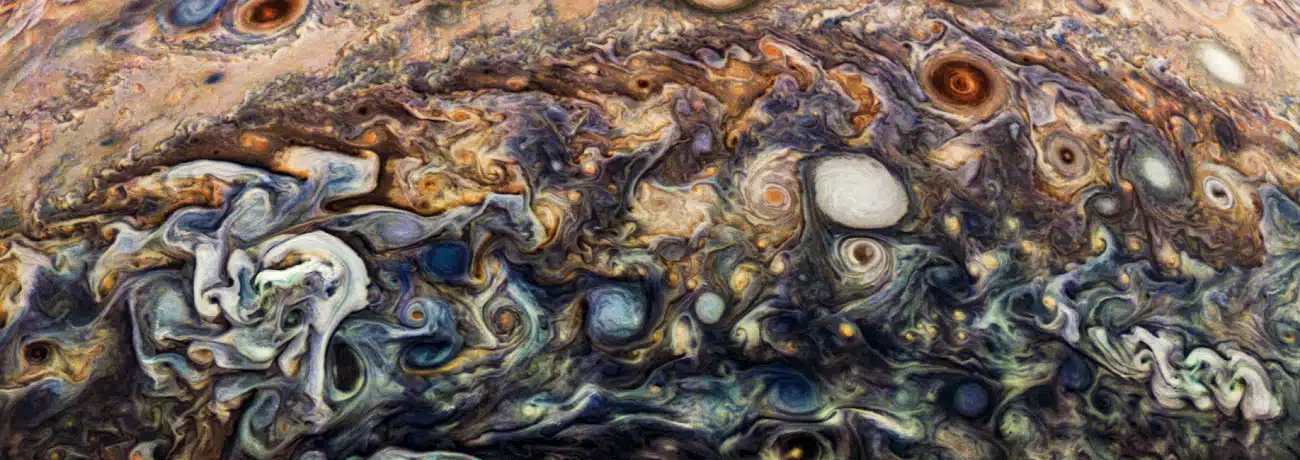
Photo: NASA / JPL / SwRI / MSSS / Gerald Eichstädt / Thomas Thomopoulos © (CC BY 3.0)
The Juno mission will have 10 more flybys before its end in September 2025, when the spacecraft will purposely be crashed into Jupiter.
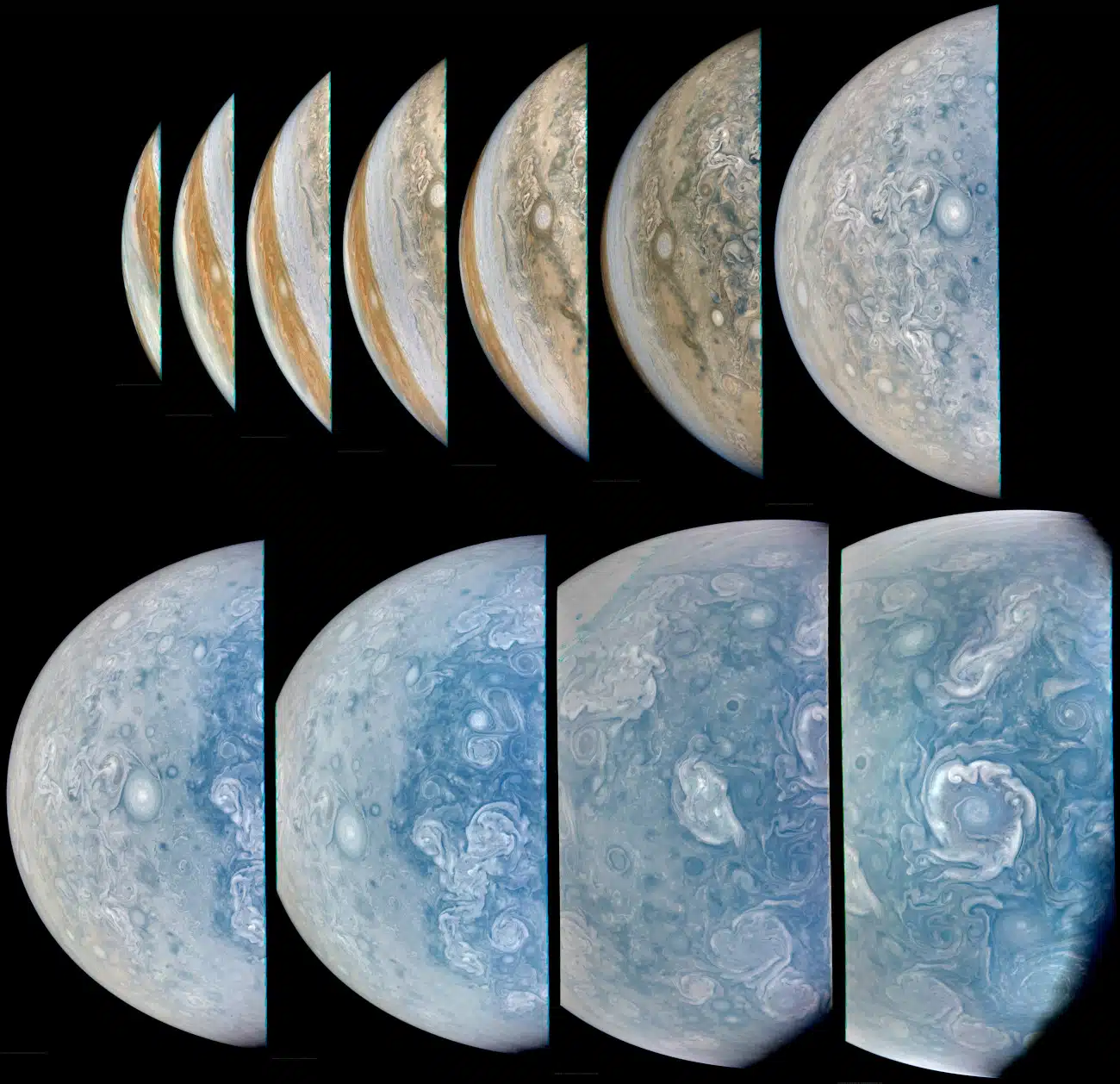
Photo: NASA / JPL-Caltech / SwRI / MSSS / Brian Swift © (CC BY 3.0)
JunoCam: Website
Source: JunoCam Image Processing Gallery
Related Articles:
Jupiter’s Most Stunning Images Captured by NASA’s JunoCam in Sharp Detail
Incredible Footage Captures the Moment a Comet Collides With Jupiter
Green Bolt of Lightning Captured on Jupiter by NASA’s JunoCam
NASA’s JunoCam Shares Stunning Rendering of Jupiter’s “Frosting-Like” Clouds











































































